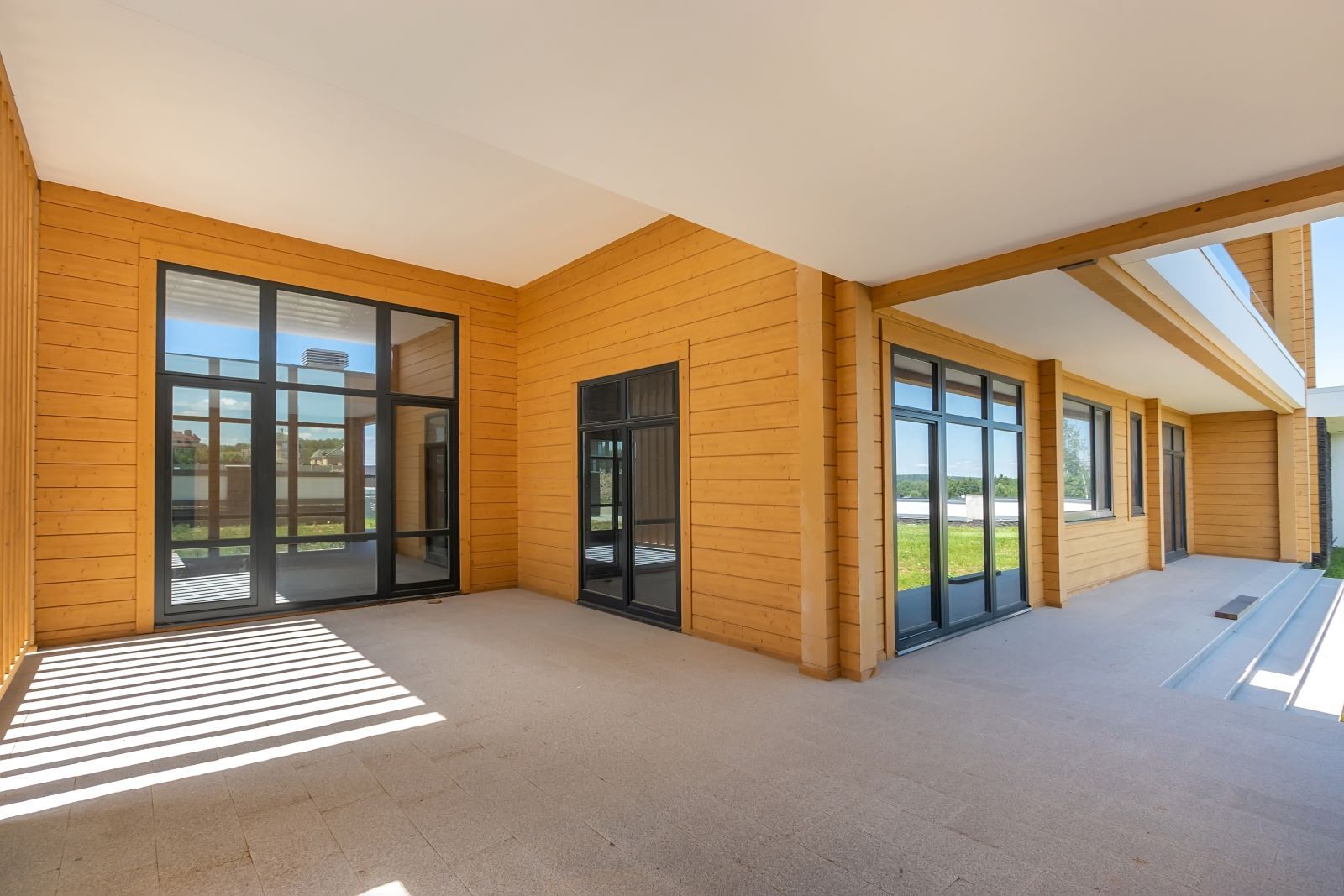Kensington’s Architecture: A Sojourn Through the Ages
Kensington's identity is inextricably linked to British royalty and trappings of generational wealth. From adorning postcards to inspiring fiction and serving as film backdrops, the locale’s enduring acclaim is unassailable. With its distinctive gastronomy and wealth of cultural institutions, the neighbourhood not only reflects London's rich heritage but also stands among the capital's most prestigious enclaves.
One of Kensington’s most striking features is its architectural mosaic, which is both breathtaking and historically layered — indeed, being in Kensington means experiencing a microcosm of British history. Below, we trace the history of Kensington’s architectural inheritance.

A Chronicle of Kensington's History
It was during the late 17th century when Kensington began rising to prominence, with William III and Mary II purchasing Nottingham House, a modest suburban villa. They initiated what would become a generational undertaking of reimagining it into a magnificent dwelling fit for royalty. After it was transformed into a palace, they began the trend of hosting grand balls and also held weekly “Drawing Rooms”, which were sophisticated soirees for the literati and nobility to mingle. Over centuries, successive Georgian monarchs enriched the palace by adding more gardens and receptions while also adorning the interiors with distinguished artworks. It was here that Queen Victoria spent her childhood, and by this juncture, Kensington’s status as the royals’ homestead was well established. Nottingham House became the iconic Kensington Palace, the official address of minor working royals.
By the mid-1800s, Kensington became fully integrated into London and began evolving into a flourishing urban landscape. The High Street garnered renown for being a fashionable promenade for high-end leisure, while more residential blocks started emerging throughout the district. Thus was established Kensington's enduring position among London's most coveted addresses – from a rural hamlet to a Royal Borough.
Kensington’s Architectural Legacy – Tracing the Lineage
i. Renaissance Period
While Kensington was still a humble agricultural settlement, it was dotted with timber structures and farmhouses, most of which have vanished to time and redevelopment. However, Holland House (also known as Cope House) is a surviving relic of the era, showcasing the unique detailing of Jacobean architecture and still possessing the patina of four centuries.
ii. Baroque Period
Kensington Palace stands as the emblem of the following epoch in architectural history, namely the Baroque movement. Initially a Jacobean villa, Sir Christopher Wren was tasked with reinventing the dwelling by William III and Mary II, introducing formal symmetry, classical columns, and opulent ornamentation. The palace embodies the era's characteristic grandeur, making it one of Kensington's splendid properties.
iii. Georgian Period
The Georgian period heralded an age of classical, restrained elegance, characterised by meticulous symmetry, graceful cornices, and expansive sash windows that enhanced the sense of natural light and spatial generosity. Stuccoed facades featured carefully proportioned windows – uniform sash arrangements framed by shutters and columns – that concealed lofty interior proportions, imposing fireplaces, and rich wooden or marble floors.
Tall rows of terraced townhouses were erected around impeccably landscaped garden squares, luring in England's social elite from the countryside to London's vogueish urban centre. During this period, houses were designed specifically for aristocrats and landed gentry, with entertaining on a grand scale as a key consideration.
In Kensington, among the earliest Georgian houses were those built on Holland Street – formerly Parson's Yard – in 1724. Historical accounts suggest the street housed several royal ladies-in-waiting. At the time, whispers circulated of underground passages said to link the residences directly to the palace. Kensington's quintessential Georgian properties can also be found fringing Kensington Square and Campden Hill Square.
iv. Victorian Period
During the reign of Queen Victoria, London basked in the bounties of the Industrial Revolution. This ushered in a swift rise in prosperity and population, propelling an equally brisk urban expansion. The cityscape soon unfurled a tapestry of varied architectural styles, signalling the dawn of architectural eclecticism. This epoch embraced numerous movements, from Renaissance and Queen Anne to Moorish Revival and Neoclassicism.
It is Victorian architecture that’s most prevalent in Kensington, characterised by ornate detailing, bay windows, and Gothic revivalist features. Intricate motifs, cast iron railings, and patterned brickwork signalled a departure from the quiet beauty of Georgian and Regency design, while the occasional stained glass windows and handsome arches spoke to its penchant for Gothic gravity.
The staggering expansion of Victorian Kensington can be attributed to Prince Albert’s passion for arts and learning, which found expression in his thoughtful transformation of the district into a beacon of culture and academia. Under his patronage, the Natural History Museum, Victoria and Albert Museum, and Royal Albert Hall were commissioned – all reflecting the eclecticism of Victorian architecture through their varying stylistic choices, while remaining key cultural custodians of Europe.
With the steady population growth, rows of Victorian terraces became integral to Kensington and the rest of London. They were often equipped with plumbing and other modern conveniences that were revolutionary for their time.
v. Edwardian Era
The city’s burgeoning population, coupled with the advent of train lines, paved the way for the emergence of suburbia – the outskirts of London that offered refuge from the cluttered city centre. This epoch saw the rise of large homes drawing upon Baroque and Georgian precedents while embracing contemporary Arts and Crafts principles. Tempering Victorian excess, light-filled, spacious interiors became defining elements of Edwardian homes, as were front gardens. It also signalled the beginnings of modernity and innovation, as electric lighting and central heating became standard features in Edwardian mansion blocks.
There is a notable presence of Edwardian architecture in Kensington, testifying to an era when the neighbourhood welcomed the modern age. Some examples of Edwardian architecture in Kensington include the Kelvin Court in Kensington Park Road and The Lodge in Kensington Park Gardens – both purpose-built mansion blocks exemplifying the period's functional urban living.
vi. Modernist Homes and Period Conversions
The Royal Borough of Kensington and Chelsea saw a fair share of modern buildings emerging during the post-war period. Such properties are defined by their angular silhouettes and the incorporation of concrete, steel, and glass. Rooted in brutalist principles, rigid geometric forms and unspoiled exposure of materials were salient characteristics.
While most modernist buildings were erected in Chelsea, there are a handful of examples in Kensington, such as the Embassy of Slovakia in Kensington Palace Gardens. Another example is the highly controversial Trellick Tower in North Kensington, a landmark Brutalist-style apartment complex completed in 1972.
Grounded in tradition, most contemporary properties in Kensington are period conversions – a wealth of heritage buildings have been sensitively upgraded with interior design schemes and cutting-edge modern conveniences, offering an incredible fusion of storied elegance and contemporary sophistication.
Final Thoughts
Kensington’s architecture serves as an immersive journey through London’s aesthetic and political history; every home and every street carries the imprint of eras that shaped modern London. When one steps into Kensington, they experience Britain's storied past unfold in real time.



